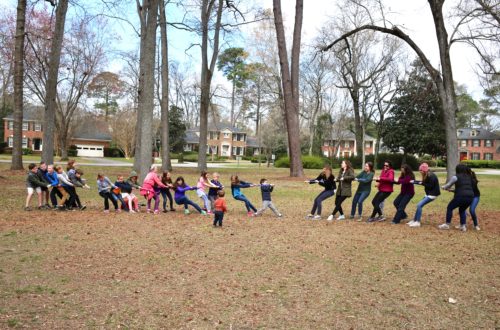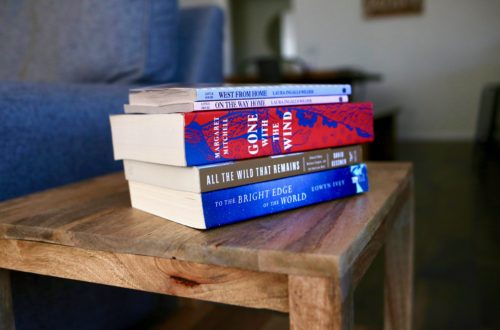august bookshelf.
This was quite a month for reading, but before you get too impressed, know that I didn’t finish all of these books. However, I’ll still give some thoughts on each one, in case you’re interested (if it takes you awhile to read through it all, don’t worry; it took several days to write!).
1. A Sacred Sorrow, Michael Card (recommendation from my dad)
It’s hands down the best book I’ve ever read on suffering. I’ll be recommending this book to everyone, and you don’t need to be going through something truly horrible to resonate with it. If there’s one thing I’ve learned, it’s that suffering is common to all of humanity, and there’s no such thing as, “My suffering isn’t big enough to matter.”
Because of Card’s deeply honest and deeply biblical writing, I’ve learned a language to describe some of the darkest doubts and the deepest hurts of my heart. I’ve learned a way to reach out and connect with the God who is already reaching out to me. I’ve grasped in a new light the vast array of fellow-sufferers God gives space and dignity to throughout Scripture, prayed their prayers after them, felt not-so-very-alone in their company. I’ve sat with three or four friends who are facing their own mountain of pain and I’ve not needed to muster up a pat answer. I’ve begun to learn (not just head-learn, but heart-learn) something very, very deep, and it’s this: “In the wilderness you meet God.” And, miraculously, that’s beginning to be all I want.
2. The Highly Intuitive Child, Catherine Crawford (browsing the parenting shelf in the library)
I picked this book up after reading the back cover description, and thinking that it might, in some ways, describe my son. But after diving in, I realized that who it really describes is me. I only got about halfway through before its due date, but I’m finding it very helpful in demystifying some of my childhood (and, let’s face it, current) experiences.
It describes people who have what Crawford calls a “sixth sense” of intuition or empathy, an elevated ability to pick up on and absorb other people’s emotion, stress, anger, etc., and sometimes to have “feelings” or predictions about events (or dangers) that have yet to happen.
These kids are usually highly imaginative, prone to intense fears, people-pleasers, more easily absorb the stress of those around them, compassionate, feel intensely the “pain of the world”, may be prone to anxiety and depression if they don’t learn healthy ways to manage their heightened level of stress.
To be quite honest, I’m still in the process of trying to accept this part of myself as a “gift” and not a “weakness,” and have spent most of my life comparing myself to people who seem to be so much more laid back, steady, un-introspective, etc. But I want to keep working on this accepting, because how else can I teach my kids to embrace the unique way God made them if I don’t first embrace the unique way God made me?
I will definitely be checking The Highly Intuitive Child out of the library again.
3. No Biking In The House Without A Helmet, Melissa Fay Greene (I think referenced on a blog)
I was so happy to find out about Melissa Fay Greene’s newest book. You may remember how much David and I loved, There Is No Me Without You, which prompted us to consider adoption, and to visit Ethiopia in August, 2008.
This book, completely different from her last, is a memoir of their very unique family–after giving birth to four children, she and her husband began to adopt internationally when Ms. Greene was forty-five years old. They have five adopted children from Bulgaria and Ethiopia, all of whom ranged in age from four years old to eleven years old at the time of adoption.
Ms. Greene is a fabulous writer, a great story-teller, and I’m pretty sure I both laughed and cried in every single chapter. I recognized a lot of the content from her blog (which, I’m half-embarrassed to admit that I’ve read in it’s entirety. I’m also compelled to share with you that I’ve personally corresponded with Ms. Greene. She’s gracious and encouraging and one of my mom-heroes).
In this memoir, she is brutally honest about the realities of adoption, and has a way of both de-glamorizing the idea of international adoption and also showing such delight in and gratitude for each of her children. She makes me more grateful to be a mother. I loved it.
4. Sheetrock and Shellac: A Thinking Person’s Guide to the Art and Science of Home Improvement, David Owen (browsing the DIY/home improvement shelf in the library)
Owen’s memoir started out strong, and I blogged about it here. But pretty much the whole second half of the book describes in great detail the construction process of the log cabin he built, and that’s where I got bogged down. I didn’t find that part nearly as profound or entertaining, and I think gave up about two-third’s way through the book. David ended up doing the exact same thing. But the first half is one I’ll definitely want to reread, especially when we purchase a home.
5. Blood, Bones, And Butter: The Inadvertent Education of a Reluctant Chef, Gabrielle Hamilton (Barnes and Noble food memoirs display table)
Gabrielle Hamilton, chef and owner of Prune restaurant in NYC, writes a creative, bitingly sarcastic account of her journey through the food industry. It’s especially interesting because she didn’t follow the typical culinary school or increasingly popular Food Network reality show path to success.
I really enjoyed Hamilton’s conversational writing style, and some of her stories and food descriptions are exquisite. The chapter about her graduate school experience successfully talked me out of pursuing an MFA (a longtime daydream of mine). My only complaint is that there were several points in the book at which she unloaded bitter, almost vindictive diatribes against two people in her life. These lengthy paragraphs felt out of place and just plain unfair, and, in my opinion detracted from an otherwise excellent memoir.
6. At Home With Madhur Jaffrey, Madhur Jaffrey (cooking shelf at the library)
Sadly, cooking was something I learned far too little about during our eighteen months in South Asia. Due to the other demands of life, I increasingly turned cooking over to our house helpers, until, at the end, Priya cooked all three meals a day for our family (of which at least three-quarters were South Asian).
But I guess if I could go back, I’d still choose eating lots of authentic South Asian food over cooking lots of it. I just wish I could’ve done both.
So I picked up Madhur Jaffrey’s latest cookbook at the library last month, partly because I loved her memoir, Climbing the Mango Trees, partly because I wanted to see if I could somehow, from thousands of miles away, pick back up where I left off with South Asian cooking (which was making a chicken curry and frying a dosa).
I flipped through the book, and found about twenty recipes I want to try. Jaffrey definitely writes for an American audience, and simplifies steps and spice combinations for those of us who don’t have access to unlimited South Asian spices or the whole day to spend in the kitchen. I can’t wait to get it again once we’ve “settled down” and start cooking!
Food Matters: A Guide to Conscious Eating, Mark Bittman (healthy living/cooking shelf at the library)
If you know me well at all, you know I’m a big Bittman fan. Having to give up my well-loved How to Cook Everything (which, yes, made it to South Asia with us and is still there now), was one of the saddest parts of eating gluten-free. I’ve successfully gotten several family members hooked on Bittman’s cookbooks and we enjoy swapping recipes.
The tagline of Food Matters is, “Lose Weight, Heal the Planet.” But what interested me most was simple curiosity over the way Bittman himself chooses to eat, and his story of learning to eat healthy while still enjoying the fun of food. The first half of this book is reminiscent of Michael Pollan and Barbara Kingsolver in building its case for mindful, local eating. It’s an area David and I have long wanted to grow in, and now with my diagnoses of “compromised immune system,” are forced to grow in if I want to continue to heal.
I love the synergy between this book, Pollan’s Food Rules, Kingsolver’s Animal, Vegetable, Miracle, and my own nutritionist, Lere Robinson’s advice. The fact that they are all saying the same things about reducing consumption in general, eating less animal fats and dairy and more plants, trying as much as possible to eat local and reduce our country’s use of carbon emissions, to me shows that this isn’t just the latest “green” trend, but, quite simply, wise advice. Especially since they stress that doing this well, and steadfastly refusing to be seduced by advertising, means a lower grocery bill, not a higher one.
The second half of Food Matters is full of recipes and meal plans, which are so practical that I’ve already put a couple into practice. I will be blogging more about this book since I want to spend the month of September experimenting with a few lifestyle changes for our family.




2 Comments
mama g
I just finished listening to In Defense of Food by Michael Pollan where he expands Food Rules. I recommend that as part of your “food” reading.
Miriam
I mentioned No Biking in the House Without a Helmet to my sister-in-law (they have adopted 2 boys and one is from ethiopia). She highly recommended There is No Me Without You by the same author if you are interested!